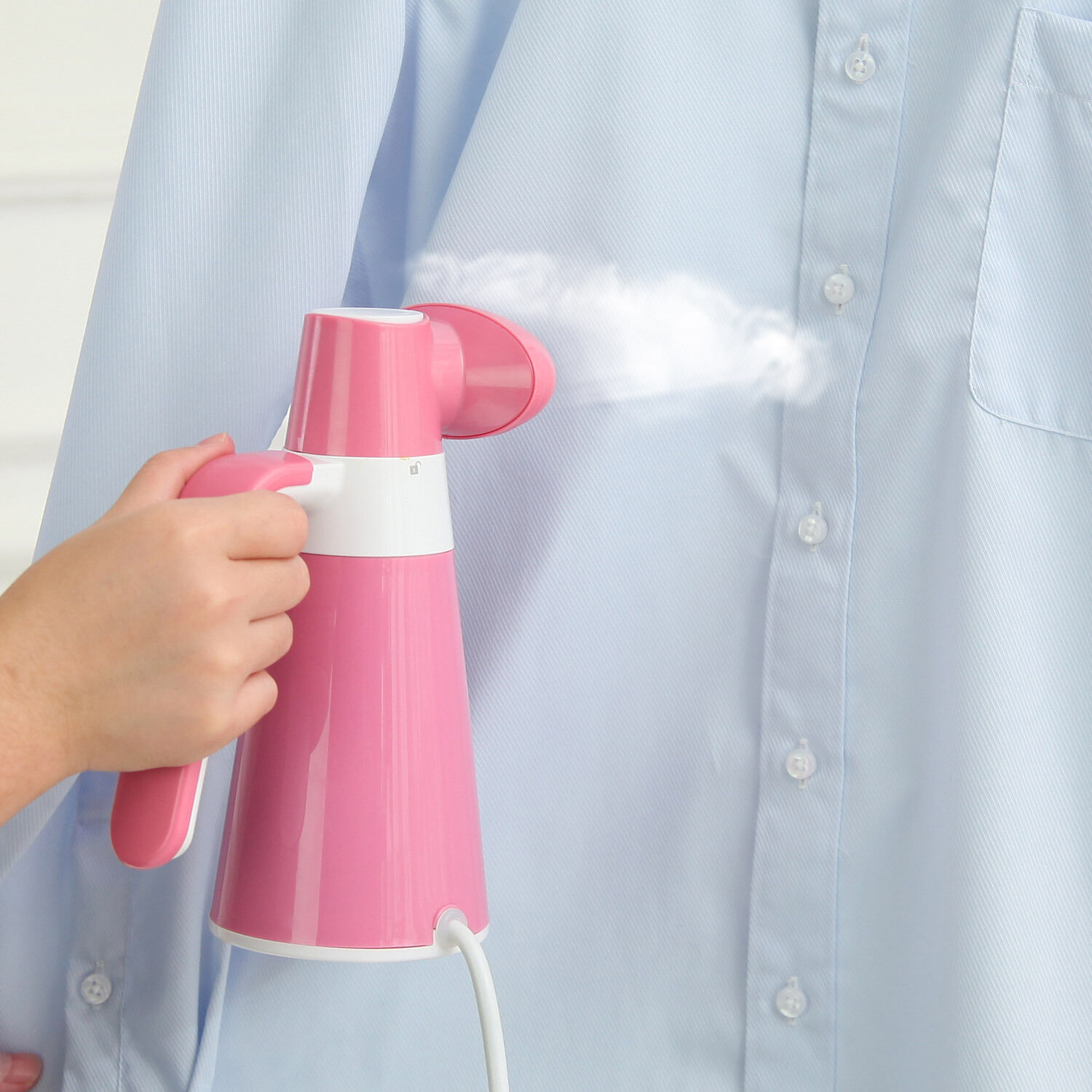How to use the steamer correctly
Having appeared on the domestic market relatively recently, this technological novelty (which, by the way, turned 80 years old) immediately gained immense popularity among many housewives around the world. Having quickly figured out how to use the steamer, many of them really confirm its high efficiency and convenience, while the closest "competitor" (iron) is still alive and well. Then what is the reason for its popularity?

- Device and short description
- Principle of operation
- Types of household steamers
- What can be ironed with a steamer?
- How to use a handheld garment steamer
- How to use the steamer: safety rules
- When does steaming not give the expected effect?
- Storage and care
- Iron vs steamer: the main differences
- Video: how to use the steamer
Device and short description
The steamer (an established tracing paper from the English language) or steamer was invented in the 40s of the last century. However, for a long time it was used mainly for highly specialized tasks, before manufacturers saw the possibility of using it in everyday life.

Today this device has a fairly simple design, which provides high reliability. A typical household steamer consists of:
- Tanks for storing water.
- Heating element.
- Evaporator for steam supply: remote or rigidly built into the body.
- Hose (for stationary devices).
- Attachments for various fabrics and ironing modes.

Some types of devices can be equipped with a clothes hanger, a lint brush and a protective mitten.
Note! Recently, the opinion has spread that such a device as a garment steamer can be made by hand, for example, from a plug-in steam generator with an iron. Nevertheless, such an imitation is still not a full-fledged replacement for the steamer.

Principle of operation
The operation of any steamer is based on the principle of heating water to a boiling state and supplying the resulting steam outward using small nozzles located on the plane of the evaporator. Steam can be supplied by "gravity", as a result of the formation of overpressure, or using a special pump. In the latter case, the performance of the device increases dramatically.

The flattening of the garment occurs through physical processes similar to those that occur when ironing with a conventional iron. However, the steam effect allows for a more uniform heating of the fabric fibers, especially in heavily crumpled or hard-to-reach places. Therefore, with a proper understanding of how to steam things, you can quickly tidy up clothes of even the most complex cut.

Types of household steamers
Despite the abundance of sold models and manufacturing companies, there are only two main types of household steamers:
Handheld or portable
Its main advantage is the price. Usually these are small compact devices, travel format, allowing you to quickly put clothes in order.Due to their design features, they are unsuitable for long-term use, since they provide a low intensity of steam supply. Sometimes they are found in the design "electric kettle", which really allows you to use the device exclusively for this purpose.

Stationary or vertical
More powerful and more efficient devices. They are distinguished by the presence of a steam supply hose, which makes them suitable for ironing a wide variety of products. Since the floor standing steamer can be used for up to half an hour, it is especially effective when ironing large items such as curtains or suits. Also, the delivery set necessarily includes a vertical rack with a hanger, designed for convenient placement of outerwear.

Additional Information! In pursuit of a buyer, many manufacturers provide their devices with various specific functions.

For example, Phillips is known for the ability to carry out antibacterial treatment, Tefal is known for its very good ergonomics and quick preparation for work, and Domena devices allow water to be added during operation.

What can be ironed with a steamer?
Despite all the features, benefits, and understanding of how to steam things properly, these devices are not equally good at smoothing different types of fabrics. Nevertheless, they are able to show good efficiency when ironing the following products:
- Delicate things. Synthetic and delicate natural fabrics cannot be damaged.
- Embellished clothing. Laces, frills, rhinestones and other additional elements are not an obstacle for steam, unlike an iron.
- Outerwear: fur coats, jackets, thick-lined suits, jackets.
- Curtains and curtains. You can iron directly on the hanger without removing it!
How to use a handheld garment steamer
It should be understood that caring for things using such devices requires an understanding of the principle of operation, mastering certain techniques and differs from classic ironing. For example, when processing delicate products, you should not "crawl" over the clothes with the evaporator - there should be a small gap between the fabric and the nozzles (1-2 cm, selected empirically), while outerwear needs deep steaming and it is appropriate to apply tightly here evaporator.

Preparation
Before turning on the device, it is necessary to pour water into a special container, hang clothes on the hangers or hanger included in the kit, and turn on the device. After that, you need to wait a little, since heating takes some time (usually 40-50 seconds). As soon as steam comes out of the nozzles, you can start ironing.

Steaming
The steaming process itself is relatively simple - you need to install the evaporator over the crumpled area of the fabric and gently move from bottom to top to smooth out the bruises. Since you need to steam things in an upright position, in order to smooth, for example, the bottom of a shirt well, you should hold it by the edge with one hand and walk several times along the stretched surface.

Sometimes you have to support the product from the other side. To do this, you can use a special protective mitten, which is often supplied in the kit. Alternatively, you can use a regular kitchen potholder covered with aluminum foil. Sleeves and collar are smoothed with special heat-resistant supports. There is a clamping attachment for leveling the edges.

Final touches
Upon completion of the work, it is recommended not to touch things for some time - they need to dry out, since the steam, albeit insignificantly, still moisturizes the fabric. Now you can turn off the device. At the same time, you should also wait for the water from the nozzles to evaporate and the heater to cool down.

Important! Before using it for the first time, it makes sense to test the operation of the device on an old shirt or an unwanted piece of cloth.
How to use the steamer: safety rules
As with any household appliance, it is also necessary to adhere to established safety standards. In addition to the risk of electric shock, if used incorrectly, there is a risk of scalding from hot steam. To avoid this, you must follow these simple rules:
- Do not use the appliance with signs of damage to the electrical cord, vaporizer or hose.
- When working, make sure that the steam jet is always directed away from you.
- Make sure that the power cable does not come into contact with the hot surfaces of the steam generator.
- Do not direct the vaporizer at pets!

When does steaming not give the expected effect?
Despite the much-publicized efficiency and comfort of ironing, the result may not be as good as expected. Even if you fully follow the instructions and understand how to use a handheld garment steamer. Unfortunately, this is the case, if you do not consider the following:
- Dense and heavy fabrics can give unsatisfactory results due to the properties of the material itself (you need to try in each case).
- The steamer cannot remove stains.
- Not intended for disinfection.
- Not intended for flat work.
- A stationary device may have a height limitation of the working area.
- Even the most "sophisticated" steamer is not able to completely replace the iron.

Storage and care
Here you should adhere to the general rules regarding the operation of household appliances: accuracy during work, perform operations strictly following the instructions and recommendations of the manufacturer, do not use the device for other purposes.

Before steaming things, you need to make sure that the container for water does not leak, and that the water itself is free of impurities and does not contain mechanical particles. After work, it is recommended to dry the container each time, and also once or twice a year (depending on the water quality) to descale it. This is usually done with a citric acid solution.

Iron vs steamer: the main differences
Each of these devices has its own strengths and weaknesses. Despite the fact that each of them is designed to perform the same task, their areas of application are still different. The main advantages of the iron include:
- Possibility to make arrows (the steamer can only direct the existing ones).
- Ability to work in a horizontal position.
- Due to the physical properties of some fabrics, the use of an iron is more effective, since the heating temperature of the sole is much higher.

Thus, it becomes clear that an ordinary household steamer (albeit a multifunctional one) is an exclusively niche device designed to perform a certain number of tasks. This does not in any way reduce its effectiveness, as it is much easier to use the steamer than an iron, especially when ironing products with a large surface.

Nevertheless, it is worth counting on the maximum return only if you take into account the competent use of both devices. Only under this condition, you can really forget about the problem of ironing forever.
Video: how to use the steamer








